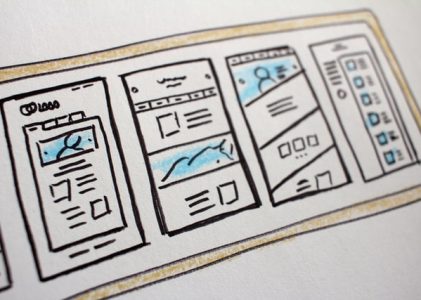Do you have a personal brand? Have you been thinking about starting one? What is your website like and how well does it represent the person that you are?
Read on to get insight into how to launch yourself effectively on the Internet with a website. This blog post is targeted towards marketers, entrepreneurs, new businesses who are looking to start their own personal brand.
When first starting a personal brand, it is easy to get overwhelmed by all of the different things you need to do. It can be a bit overwhelming because there are so many things that go into creating your personal brand website and having an online presence.
Use this checklist to ensure that your website portrays your personal brand in the best possible light.
High Quality Photographs of Yourself
You want to use the highest quality photos of yourself. This demonstrates that you take yourself seriously. Don’t use low-quality photographs. If you don’t have the resources to afford a professional photographer, you can use a smart phone provided it has at least 10-12 pixels. Also, pay attention to the background. You may have to set the scene a bit before taking your pictures. You can also utilize many apps, including Canva, to remove image backgrounds if you wish to have a transparent background.
Professional-looking Logo Design
A professionally designed logo helps to capture what your brand is all about. It’s also a way of treating yourself like a true brand. It shows that you are taking yourself seriously. If you need help designing a logo, Legitt, Fiverr or Upwork are good places to start. It is a good idea to have an idea what your logo should look like, including colors. Symbols and colors have an impact on the subconscious mind, so you may want to do some research on these topics. Also, don’t forget to have your finished logo made into a favicon (this is the little logo you can see in the tabs of webpages in your browser). Canva also has many logos to choose from if you want to design your logo yourself.
- 🔲 Have your Unique Service/Selling Proposition clear and visible
Your Unique Service/Selling Proposition (USP) describes precisely what you do and how you help people. Your USP should be big, bold, and immediately visible when someone comes to your website. It should be above the fold and be front and center. Think of it like a headline on a newspaper. Don’t make visitors work to figure out exactly what it is that you do.
- 🔲 Have several Client Testimonials/Reviews
Testimonials function as social proof. They prove that you really can do what you say. That you can effectively solve people’s problems and help them in big ways. At a minimum, you should feature several key testimonials on your site. Use your best ones – the ones where you got the biggest results for a client. This may be difficult to accomplish if you are brand new and haven’t acquired any testimonials as of yet. If this is the case, you can contact people you have helped in the past to write a testimonial based on your character and how you provided assistance. Remember, your brand is more than just what you do, but also how you do it.
- 🔲 Have a clear Call-to-Action
What exactly is it that you want visitors to your site to do? Do you want them to sign up for your email list? Attend a webinar? Follow you on social media? Sign up for a free consultation? Whatever it is, ensure that it’s abundantly clear what you want them to do. You may even want to use some sort of pop-up window to get their attention. Your CTA should be sprinkled throughout your website, as to ensure your visitors don’t miss it all together. Placements you might want to consider is the top bar, side bar & footer.
- 🔲 Have a compelling “About” page
Your “About” page is both where you tell your story and reiterate your Unique Service/Selling Proposition. It’s a place for you to talk about why you do what you do. Why you’re so passionate about helping people. Use your “About” page to explain how you arrived where you currently are and what your mission is.
- 🔲 Do you have a clear “Services” page?
Your services page should clearly list all the different services that you offer, as well as what’s included with each service. Be as detailed as possible in listing what’s included in your services. You may want to give clients the opportunity to sign up for a free strategy or consultation through your services page.
- 🔲 Do you give away free resources?
Ideally, you should give away at least some type of free resource on your website. Why? Because you want to give value to everyone who visits your website. You want to start demonstrating your expertise from the very first time someone encounters you. Focus on creating a resource that is of high value. Over delivering should be a priority.What sorts of free resources work well?
- Blog posts
- Podcasts / audio interviews
- eBooks
- Videos
- Email courses
- Webinars
- 🔲 Do you have links to all your social media profiles?
Your website is a great way to get more people to follow you on social media. If a visitor likes what they see on your site, there’s a good chance that they’ll want to follow you across your social media platforms. Include links to all your social media profiles in prominent places on your website
- 🔲 Do you have a way for visitors to contact you?
Obviously, you want visitors to your website to be able to contact you. If you want to convert visitors into clients, it’s important to have a clear and compelling contact page. On your contact page, you may want to give visitors different options for why they’re contacting you. For example, general requests, working together, speaking requests, media interviews, etc.

